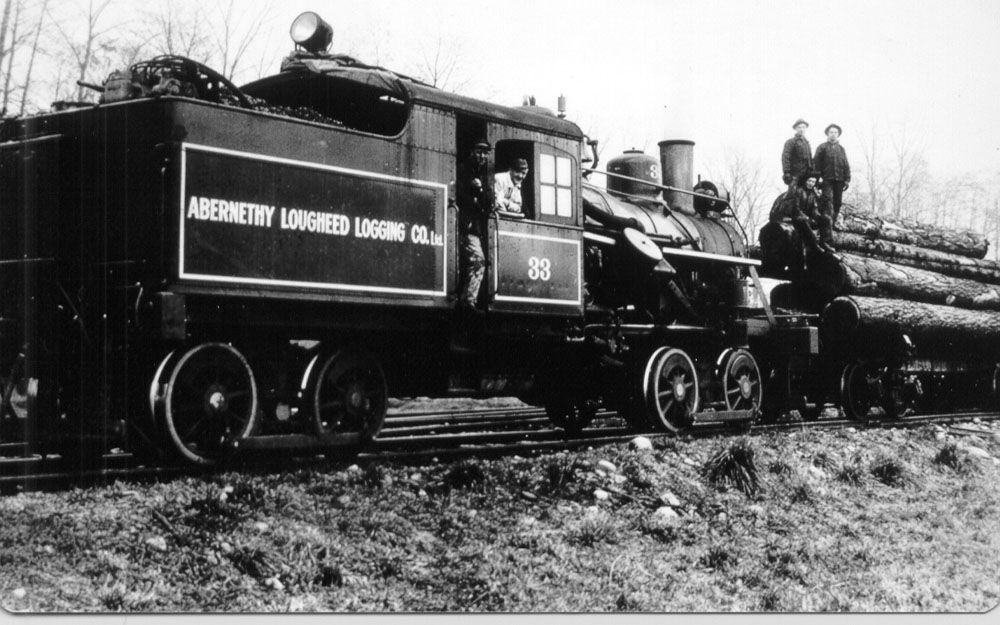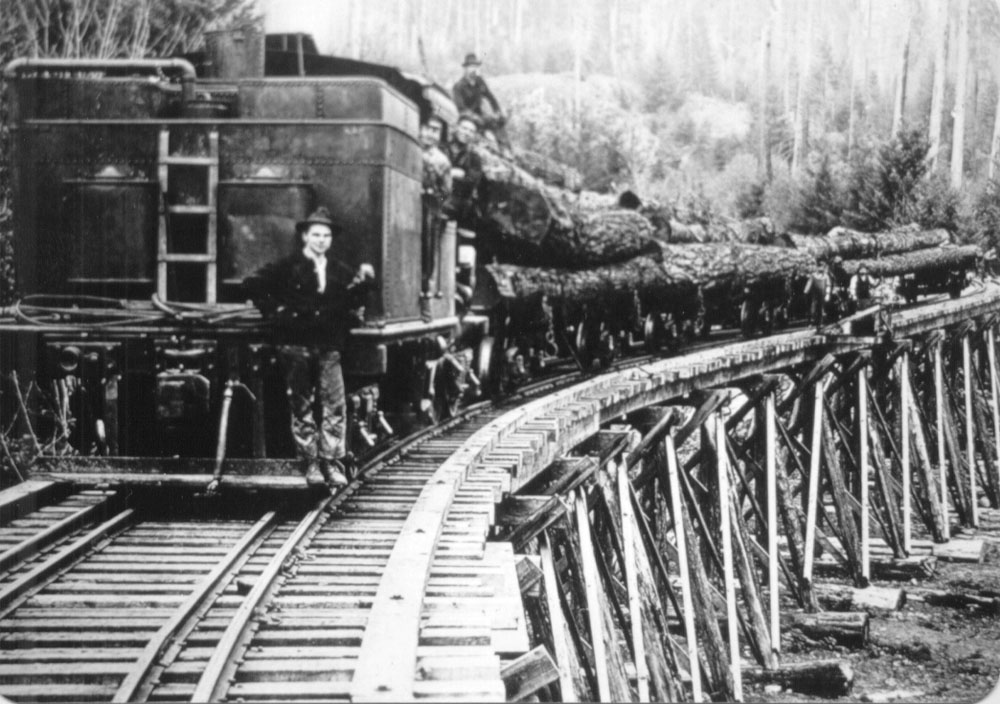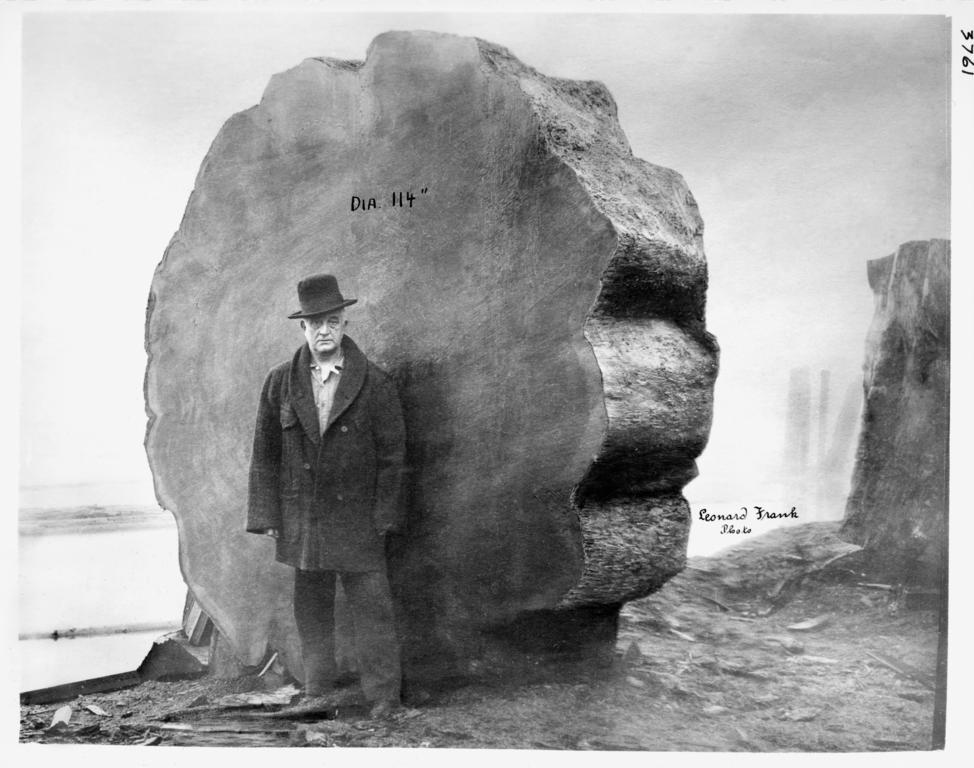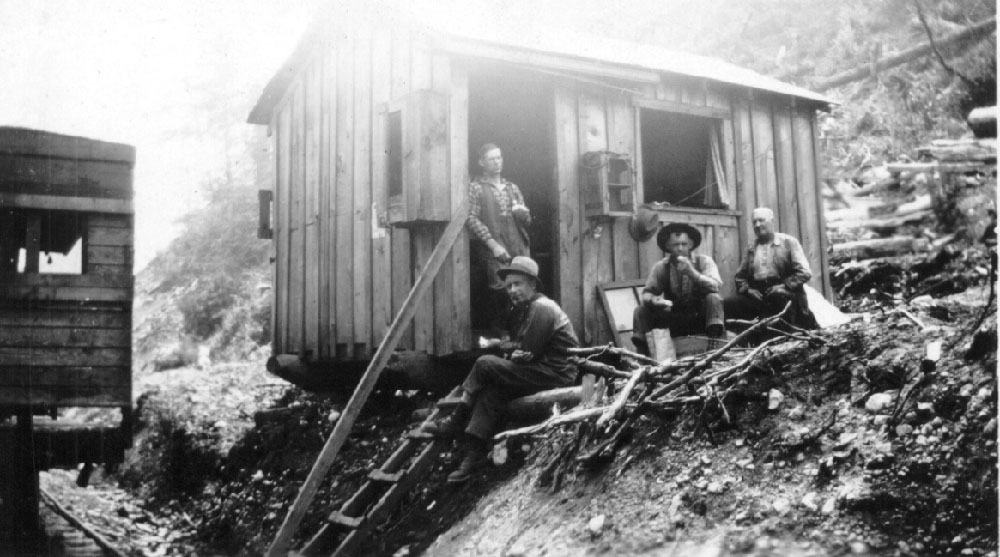
The Abernethy and Lougheed Logging Company (A&L) was throughout Haney and the forested areas north of the community. The company was the largest railway logging operation in British Columbia during its time, controlling an estimated 88 kilometres of private railway which linked upland forest camps with operational headquarters and the company log dump at the bank of Kanaka Creek and the Fraser. John William Abernethy and Nelson Lougheed, the founders of the company, met while working for the Pacific Lumber Company at Port Moody in 1902. In 1905, the pair purchased the Tyner mill at Port Haney, incorporating their operation as Abernethy and Lougheed Company Limited. George Gordon Abernethy, brother of John, became Vice President and manager of the Haney concerns, eventually becoming Lougheed’s primary partner while John managed family interests in the Eburne Mill in south Vancouver. Lougheed and George Abernethy sold their interest in the mill in 1915, switching from lumber milling to logging by acquiring the defunct Edward H. Heaps Logging Company at Stave Falls. This was their introduction to railway logging. By the late 1910s, the company was in discussions with the Miami Corporation of Chicago to log Timber Limit W, which covered the forested uplands surrounding Mount Blanchard and the river and valley of the (still undammed) Alouette Lake. The company operated with financing from Miami Corporation and its owners, the prominent McCormick-Deering families of Chicago. Surveys for the railway right of way would begin in 1919, with construction largely complete by 1921.
Camp 1, called Allco, the headquarters camp, was located two kilometres north of Dewdney Trunk Road at the end of a plank road which is now 248th Street. It contained a roundhouse with pits for two locomotives, a mechanic’s shop, a 50,000-gallon water tank, a post office, and housing and offices. Further workmen’s camps were located upland in the cutting zones, often around lakes which could supply water to operations. Camp 3, on Alouette Lake, was a “floating camp” accessed by gangways and boats.
A&L was equipped with a large amount of heavy machinery. The company kept seven locomotives – five Climax and two Heisler machines – some capable of hauling 40-loaded cars down grades of 8 to 12 percent. The locomotives pushed and pulled 150 steel railway cars which were fitted to move heavy equipment like donkey (steam) engines, winches and cables, as well as felled timber. “Speeders” were open cars which could bring personnel in and out of the camps and Maple Ridge. In addition to the railway, the company had several boats used to transport men from the camps to the logging sites and to tow flat booms and bag booms of logs to the southern end of Alouette Lake from cutting zones higher in the watershed. The actual felling of cedar and fir trees was completed using hand-drawn saws.

At most 700 men were employed by A&L during its operations in Timber Limit W. A few of these were local men who kept homes around Maple Ridge, but the labour pool was not adequate to meet the demands for workers in neither quantity nor technical training. As a result, many outside men came and lived in the forest camps, which in turn required service and administrative staff to run dormitories and cafeterias. A&L was one of the first companies in the BC logging industry to supply metal bunk beds and bedding for all of its employees and to introduce the 8-hour working day.

The two principals, George Abernethy and Nelson Lougheed, in addition to higher management, were well-reputed in Maple Ridge and kept homes there as well as in Vancouver. Tragically, Abernethy died in 1928 following a stroke at Nelson Lougheed’s home. He was 53 years old. Lougheed had built a political career out of his importance in the town, serving as a councillor and reeve in the 1910s. He would later be elected as the MLA for Dewdney in 1928 with Simon Fraser Tolmie’s BC Conservative Party, immediately being appointed Minister of Public Works. He relied on his brother, Miller, to manage the affairs of A&L.
For many years, it was popularly believed that A&L stopped operating in 1929 due to a major fire in Timber Limit W. No reference to such a fire can be found in that year; however, much of the company’s works were destroyed in 1931 by such a blaze. The company itself had already closed due to bankruptcy. By 1928, when Lougheed was elected to the provincial legislature and George Abernethy was suddenly stricken, the company was shrinking its operations in Timber Limit W as a result of the harvestable timber being depleted. The stock market crash of October 1929 sealed the fate of the American-financed company by revealing A&L as cash-poor. Without a market for lumber, its massive network of railways and camps in the woods was unnecessary and difficult to maintain. With the crash deepening into a Depression, the company’s assets were sold at a loss to its creditors. After the 1931 fire burnt through the remaining accessible stands of timber, the A&L rails were torn up and industrial logging in Haney was effectively abandoned.

Later, as Minister for Public Works, Lougheed would begin the conversation between provincial and federal governments to transform the area around Alouette Lake and the Golden Ears into a protected area. The grades of the A&L railway have been used for hiking and riding trails through Golden Ears Provincial Park and for building many miles of roads, including portions of the road to Alouette and Mike lakes, the access road to the Alouette Lake Dam on the south side of the Alouette River, and Cottonwood Drive. The pilings for the A&L log-dump are a well-known feature of Kanaka Creek Regional Park.